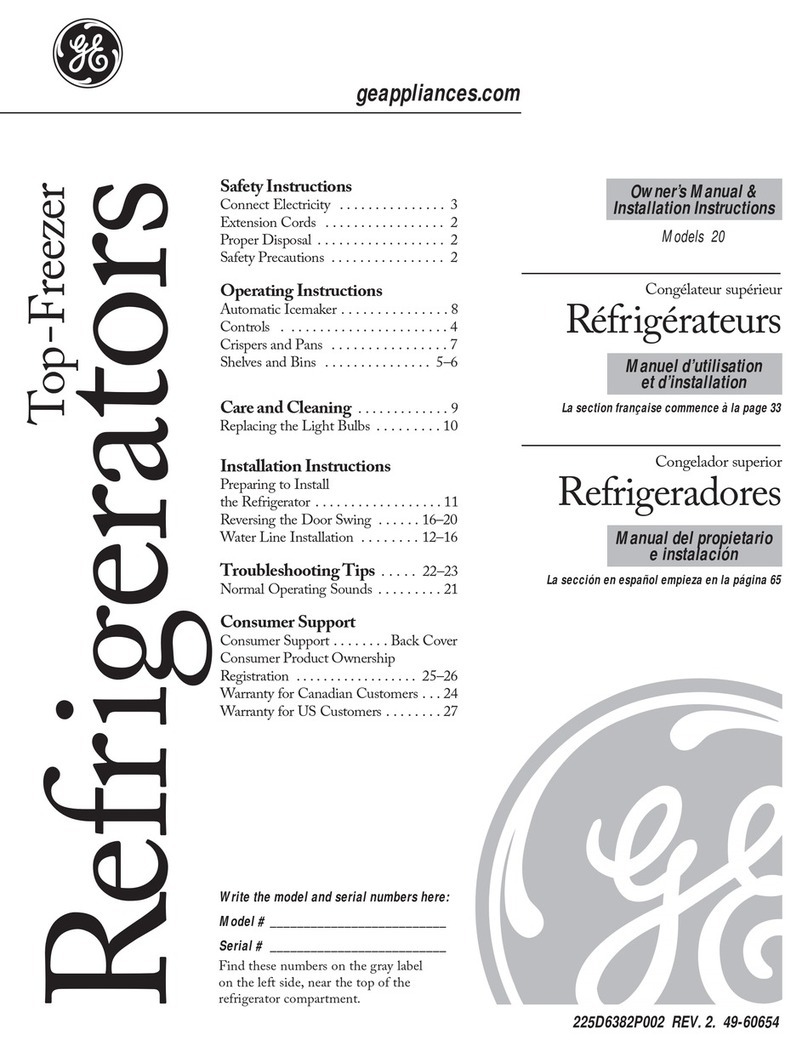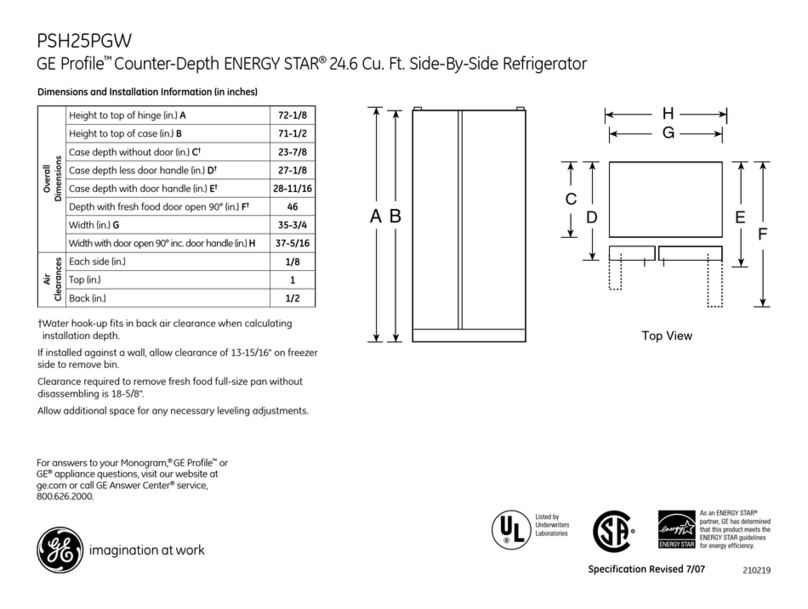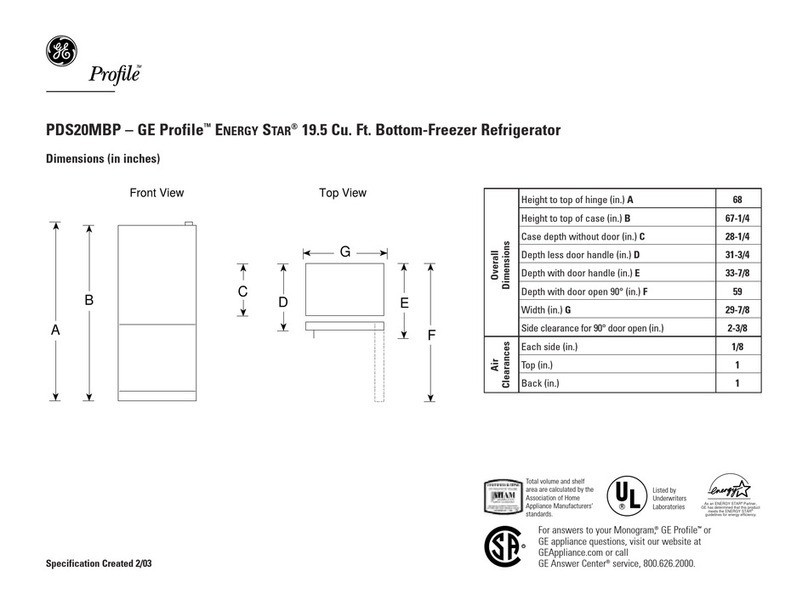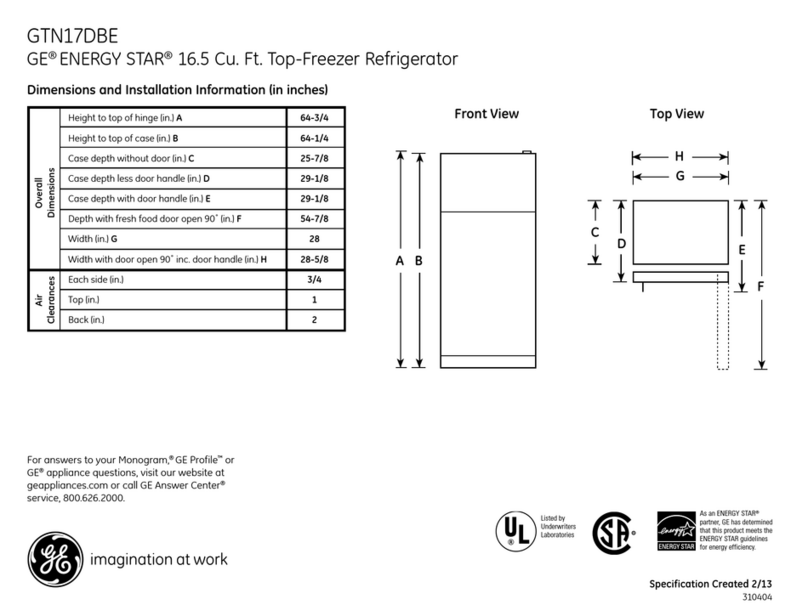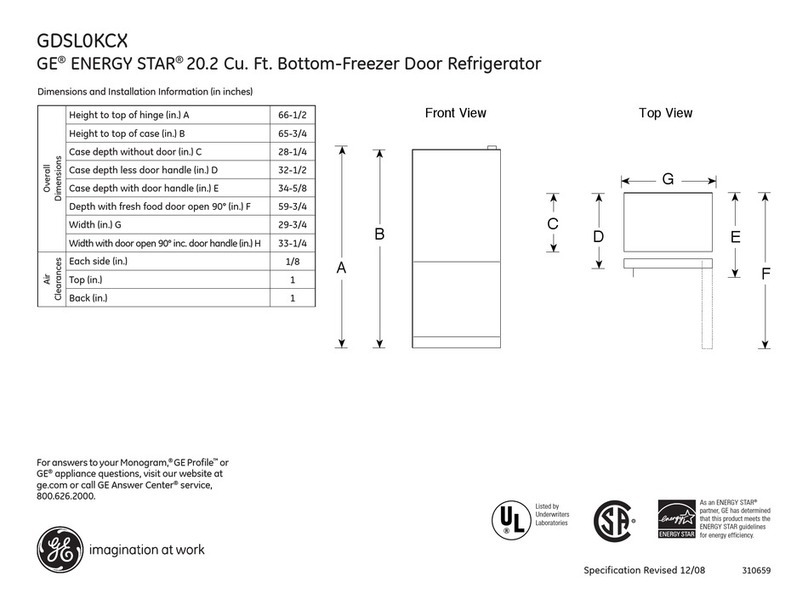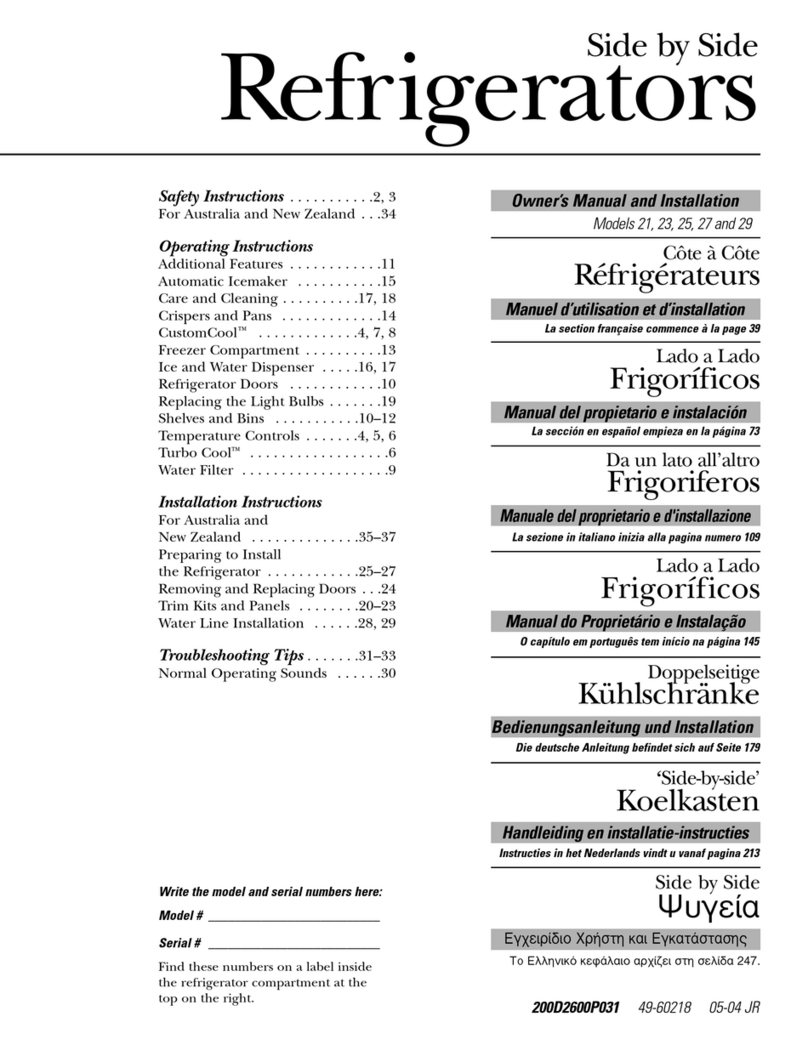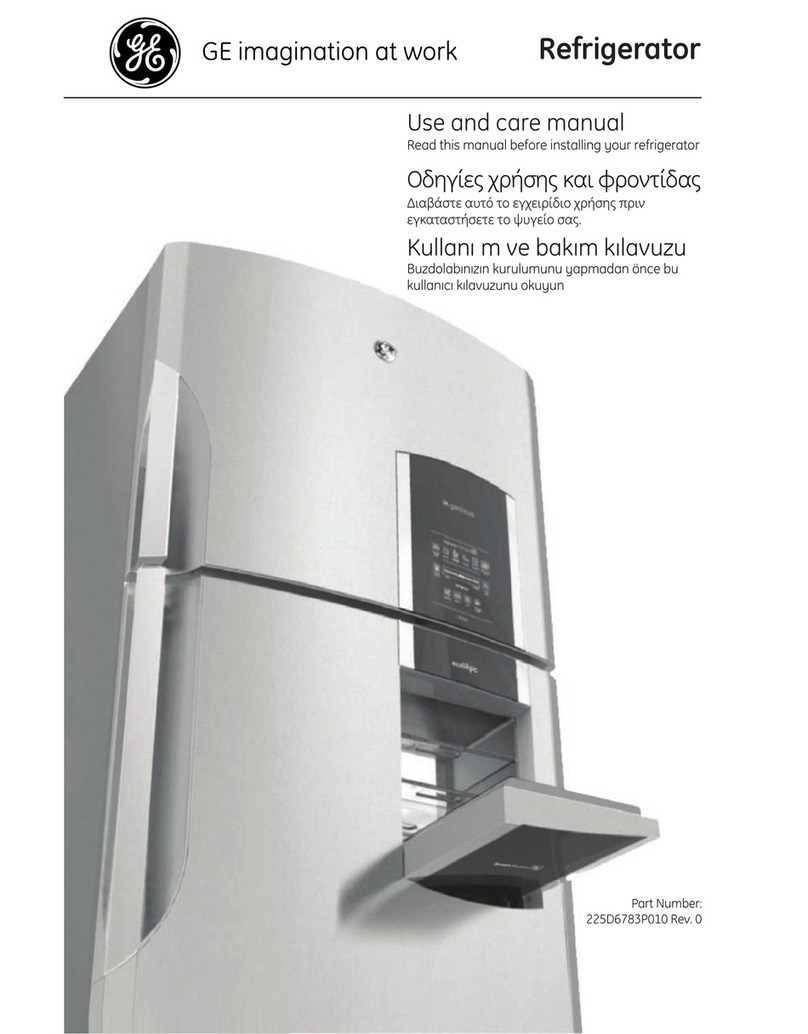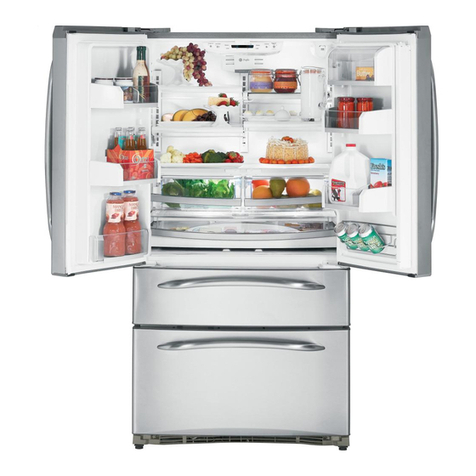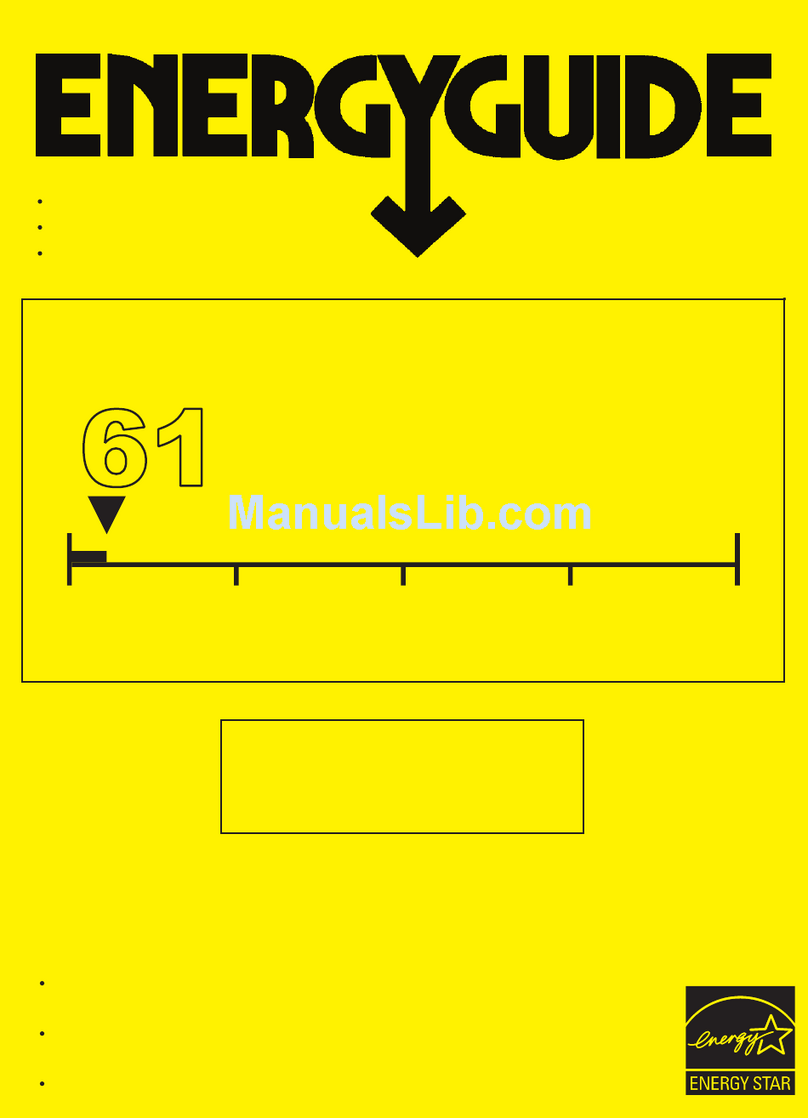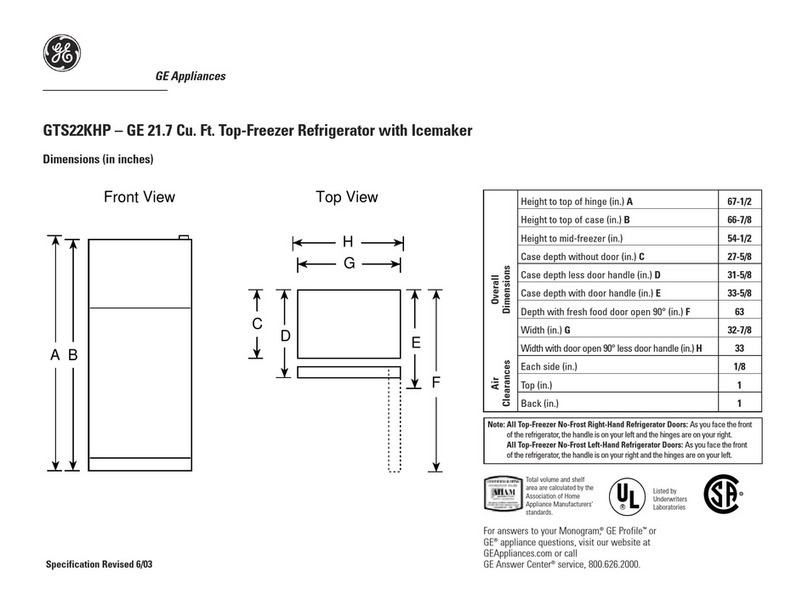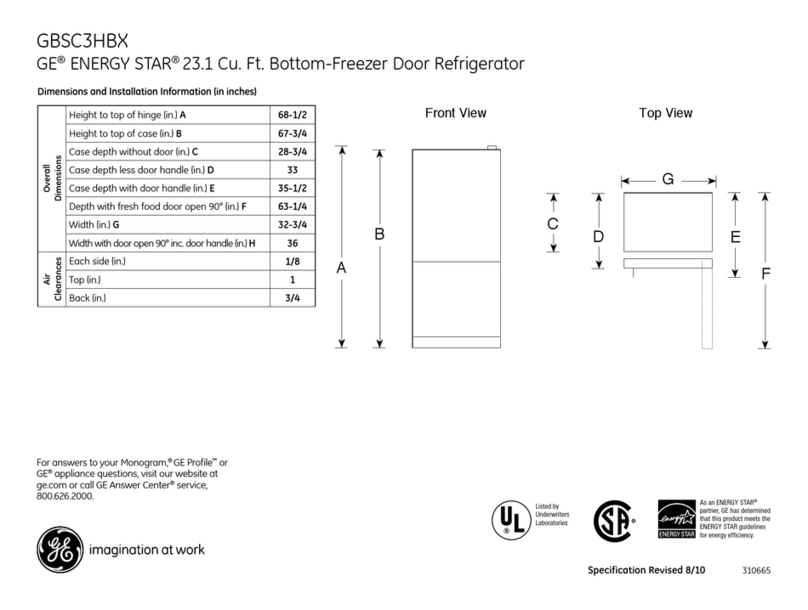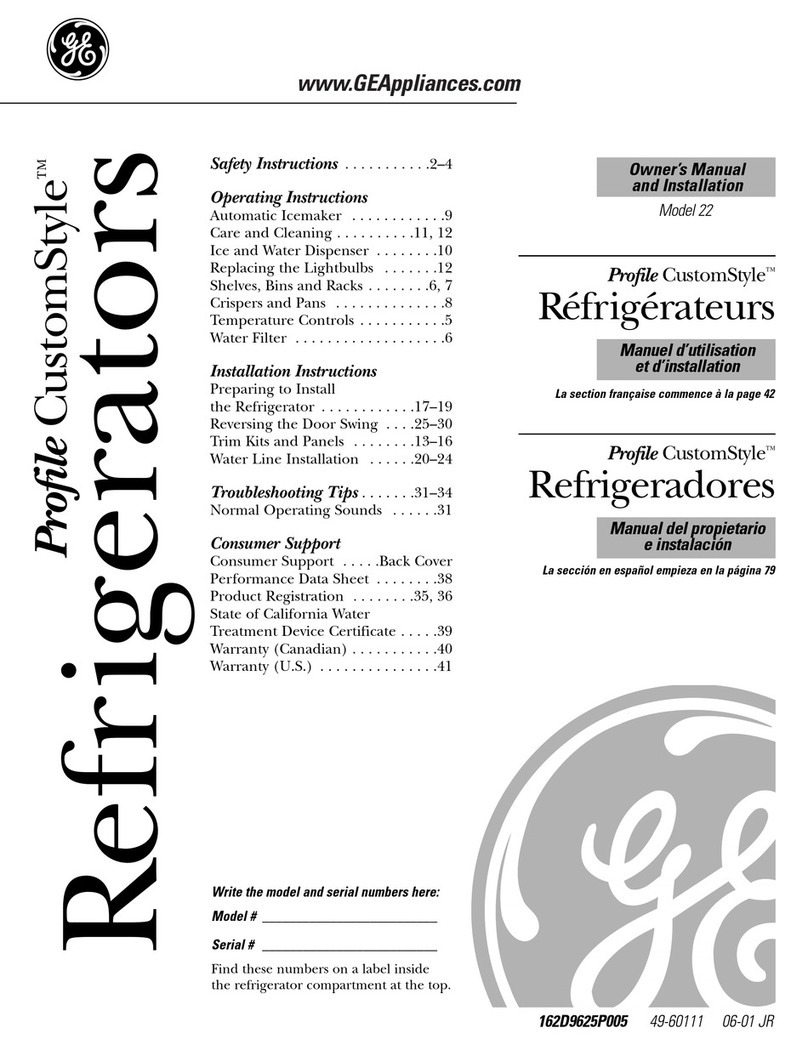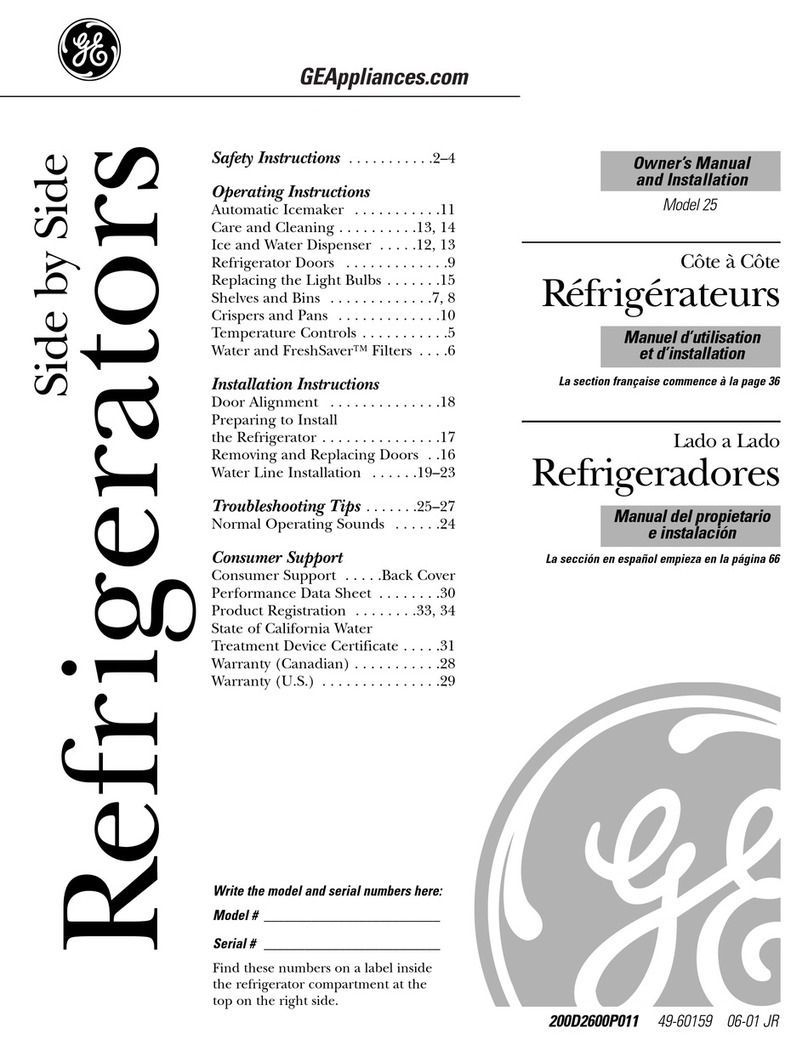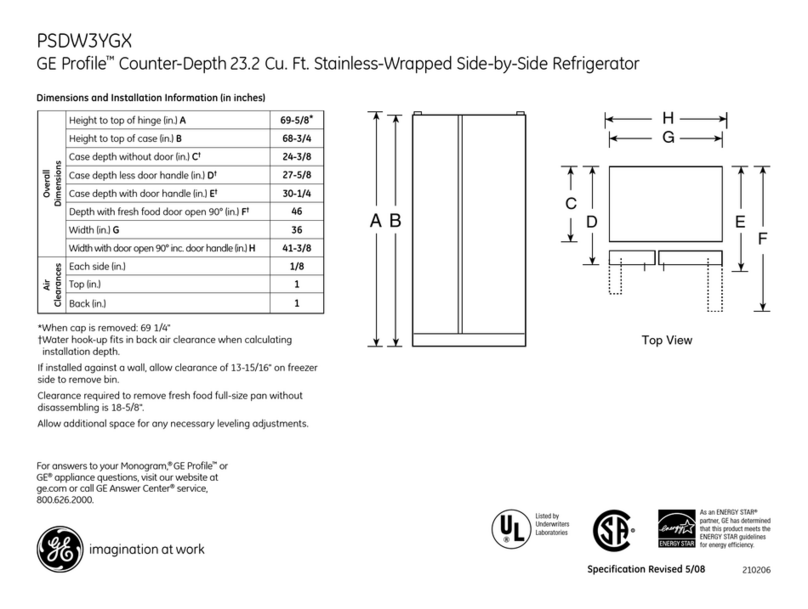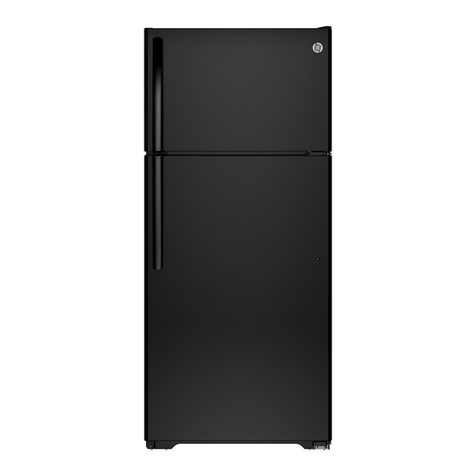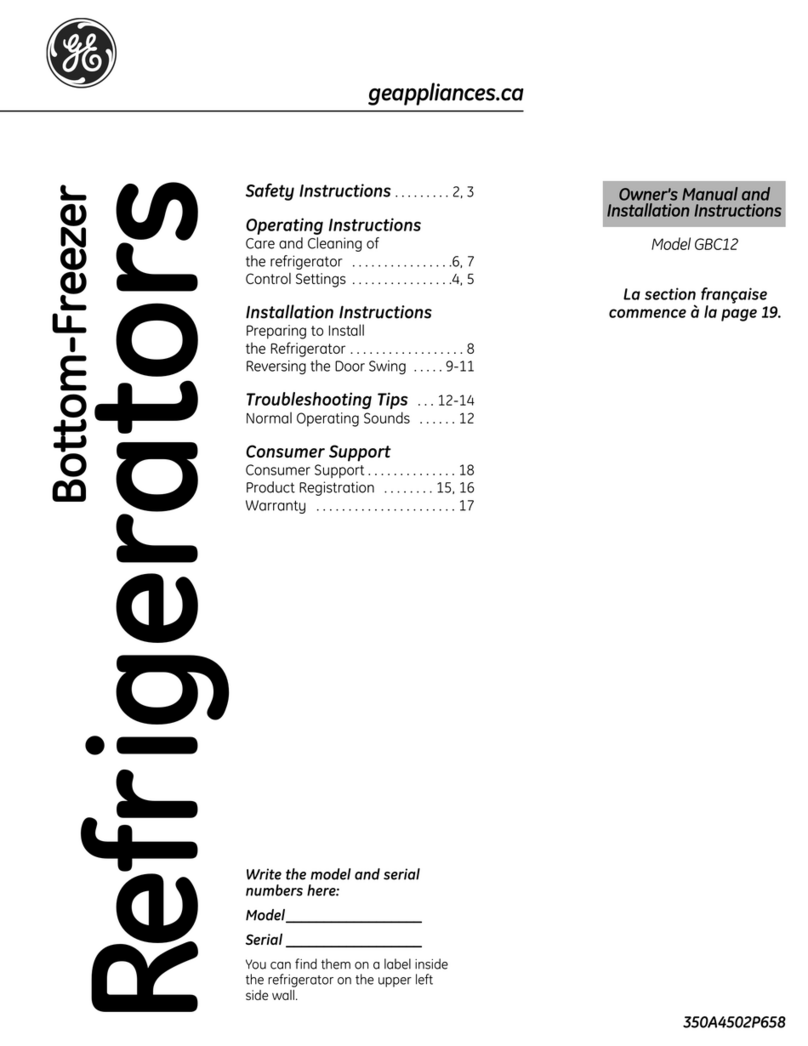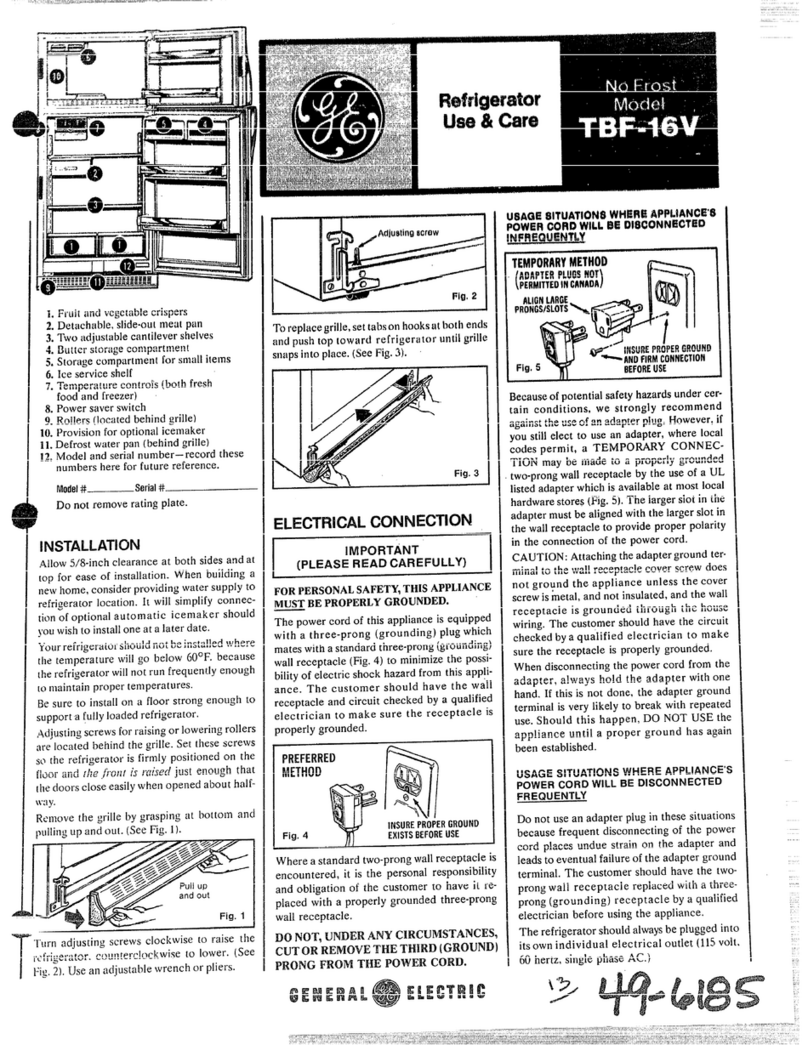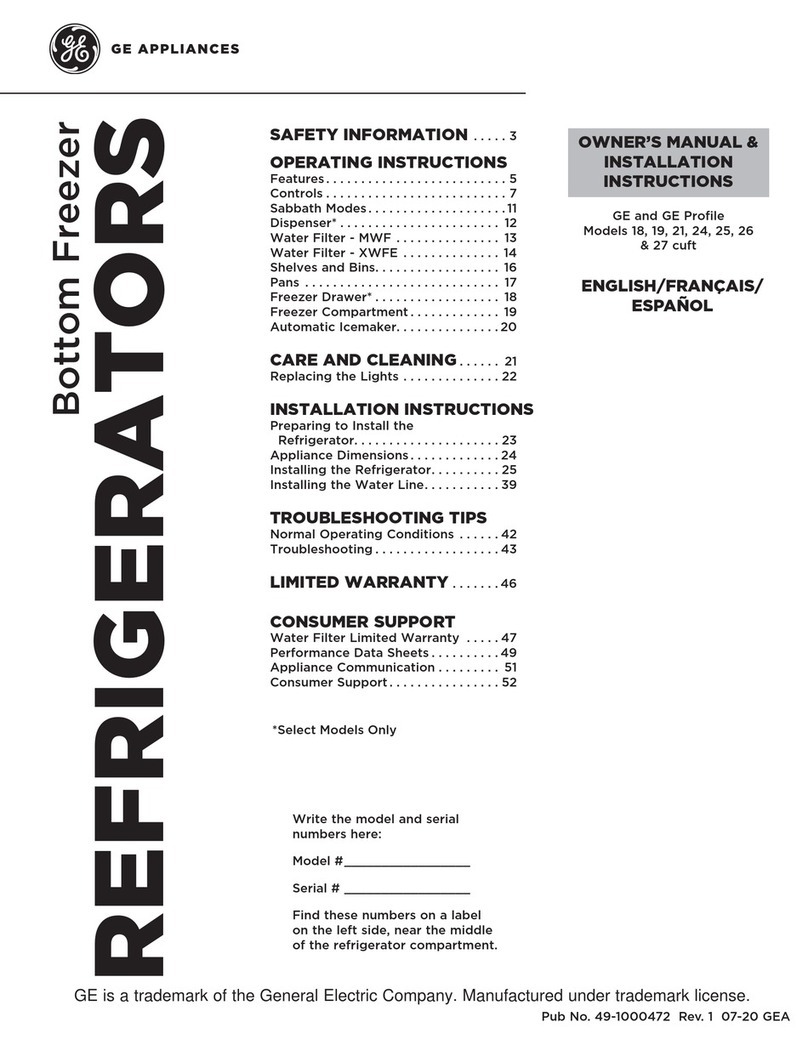
Suggestedstoragetimes
formeatandpclldtry’ IN
REFi!GER- FREEZER
ATORAT
Eatingqualitydrops 35°-400E
aftertimeshown DAYS
FreshMeats
Roasts(Beefand Lamb). . . . 3to5
Roasts(PorkandVeai).. .. . 3to5
Steaks(Beef) . . . . . . . . . . . 3to 5
Chops(Lamb) ........... 3to 5
Chops(Pork) ............ 3to 5
Groundand Stew Meats, . . . 1to 2
VarietyMeats ........... 1to 2
Sausage(Pork) .......... 1to 2
ProcessedMeats
Bacon ................. 7
Frankfurters . . . . . . . . . . . . 7
fiam(Whoie) ............ 7
fiam(Haif) ............. 5
i-fam(Siices) . . . . . . . . . . . . 3
Luncheon Meats ......... 3to 5
Sausage(Smoked) ....... .7
Sausage
(Dryand Semi-Dry) . . . . . . . 14t021
CookedMeats
CookedMeats and
MeatDishes . . . . . . . . . . . . 3to 4
Gravyand MeatBroth. . . . . . 1to 2
FreshPoultry
Chicken and Turkey
(Whole), . . . . . . . . . . . . . . . lto2
Chicken(Pieces) ., . . . . . . . 1to 2
Turkey(Pieces) ... , . . . . . 1to 2
i)uckand Goose(Whole) . . . 1to 2
Giblets . . . . . . . . . . . . . . . 1to 2
CookedPoultry
Pieces(Covered with
Broth) , , , , , ... . . . . . . 1to 2
Pieces(Not Covered) ...... 1to 2
CookedPoultry Dishes ... , . 1to 2
FriedChicken ....... 1to 2
o{;
MONTHS
6tO 12
4to 8
6to 12
6to 9
3to 4
2to 3
3to 4
2to 3
1
‘/2
1to 2
1to 2
1to 2
Freezing
not
recom-
mended.
2to 3
2to 3
12
9
6
6
3
6
;
4
(Otherthanformeatsandpoultry)
L!OSIfruitsm(jvegetables, ., . ~•~~.. .8-12 months
Leanfish, , , , , ., , . . . . .. ....,6- 8months
Fatly fish, rolls and breads,
soups, Stew, casseroles ., ., ., .. ...2- 3months
Cakes, pies, sandwiches,
leftovers (cooked),
Icecream (original carton) . . ........1 month max.
New techniques are constantly
being developed. Consult the
College or County Extension
Service or your local Utility
Company for the latest information
on freezing and storing foods.
‘US. Department of Agriculture
Tostore unfrozen meats, fish anc.1
poultry.
Meats, fish and poultry purchased
from the store vary in quality and
age; consequently, safe storage
time in your refrigerator will vary.
oAlways remove store wrappings.
~Rewrap in foil, film or wax paper
and refrigerate immediately.
To storecheese wrap well with
wax paper or aluminum foil, or put
in aplastic bag.
*Carefully wrap to expel air and
prevent mold.
@Store pre-packaged cheese in its
own wrapping if you wish.
TOstore vegetables.Vegetable
drawers have been specially
designed to preservenatural mois-
ture and freshness of produce.
sCrispness can be maintained by
covering vegetables with amoist
towel.
@As afurther aid to freshness,
pre-packaged vegetables can be
stored in their original wrapping.
Fine=quality ice cream, with high
cream content, will normally
require slightly lower temperatures
than more “airy” already-packaged
brands with low cream content.
oIt will be necessary to experi-
ment to determine the location in
the freezer compartment and the
temperature control setting to
keep your favorite ice cream at the
right serving temperature.
@Also, the rear of the freezer com-
partment is slightly colder than the
front.
Tips on freezing foods.
There are three essential require-
ments for efficient home freezing.
1. Initial qua~ity.Freezeonly top-
quality foods. Freezing retains
quality and flavor; it cannot
improve quality.
2. Speed. The quicker fruits and
vegetables are frozen after picking,
the better the frozen product will
be. You’ll save time, too, because
less culling and sorting will be
necessary.
3. Proper packaging. Use food
wraps designed especially for
freezing; they’re readily available in
awide selection at your favorite
store.
To freeze meat, fish &poultry
wrap well in freezer-weight foil (or
other heavy-duty wrapping materi-
al), forming it carefully to the shape
of the contents. This expels air.
4
Fold and crimp ends of the pack-
age to provide agood, lasting seal.
Don’t refreezemeat that has com-
pletely thawed; meat, whether raw
or cooked, can be frozen success-
fully only once.
Limit freezing of fresh (unfrozen)
meats or seafoods to number of
pounds at atime as follows:
TBF22. . . . . . . . . . .. ...21 pounds
CMtgarah3yourfoodstorage
formnvenience.
~Store all like things together.
This not only savestime, but
electricity—because you can find
foods faster.
ePlace the oldest items up front
so they can be used up promptly.
.Usethe handy shelves on the
door for most frequently used
sauces and condiments.
To saverncmeyinenergy
andfoodfxms.
@Place most perishable items such
as milk, creafi or cottage cheese
toward the rear of the top shelf as
they will stay coldest in this part
of the fresh food compartment.
~Cover moist foods with tight lids,
plastic film or foil.
~Leaf vegetabks and fruits placed
in your Nloist’n Fresh or Adjusta-
Fresh drawer will last longer when
stored in closed plastic containers
or wrapped in plastic film.
@Do not overload your fresh food
or freezer compartment with alot
of warm food at once.
~Open the door the fewest times
possible to save electrical energy.
@When going out of town for sev-
eral days, leave as few perishables
as possible in the refrigerator.
Move the icemaker manual switch
to “OFF” and shut off water to the
refrigerator.

